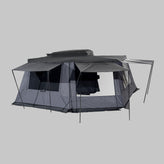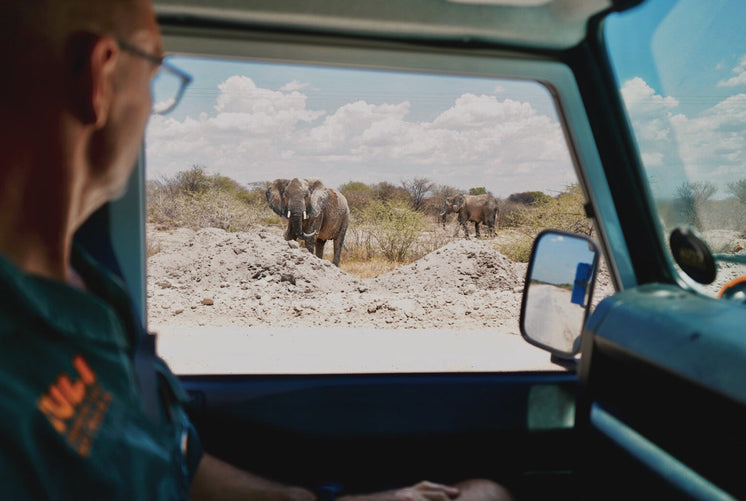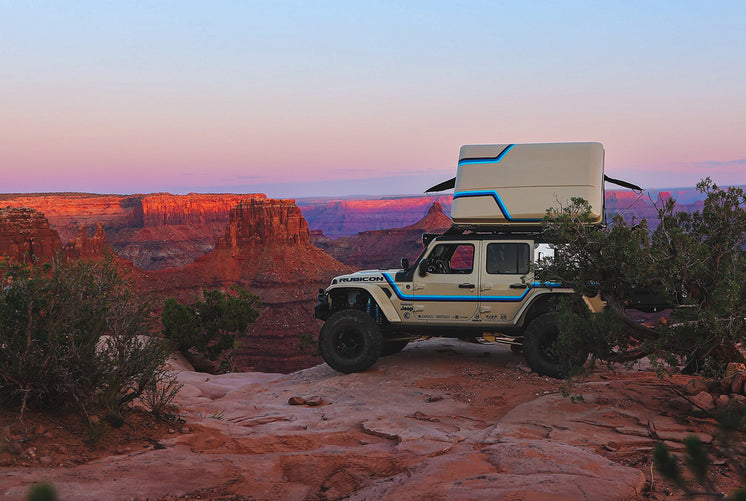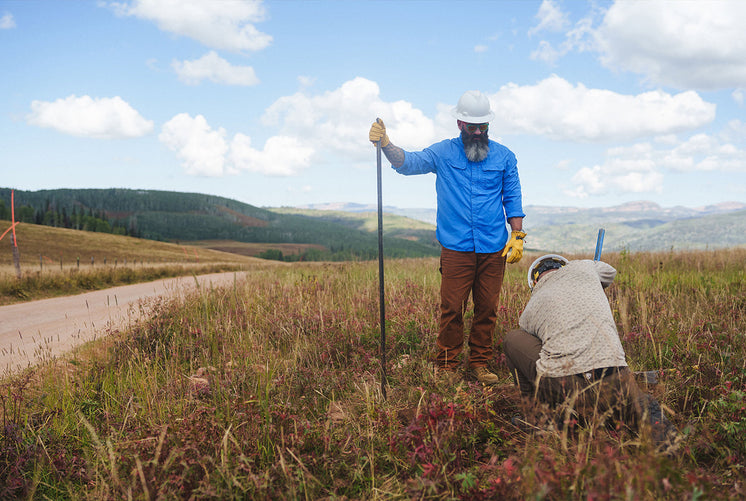What are the Best SUVs for Camping and Overlanding?
Car camping isn’t new, but the sheer number of people doing it sure is. With campsite reservations filling up months in advance, having a vehicle that can take you beyond the established campgrounds has become a prerequisite for spontaneous campers and for those of us who prefer to get away from the crowds altogether.
Fortunately, most automakers have seen this trend and responded. In fact, they’ve responded so well that wading through the options can seem downright daunting.
Hopefully, we can take some of these complications out of your search with a quick look at a handful of the most popular alternatives for 2024. We’re also going to simplify your search by taking out what used to be one of the most significant complicating factors for an adventure rig: Can I sleep in it? Our rooftop tents answer that question in spades, letting you focus your time and resources on the things that really matter, helping ensure you get a vehicle you can trust to get you to a campsite worthy of your free time, wherever that may be. We’ll focus on the following criteria, plus some general thoughts on each vehicle so you can get a jumpstart finding your next favorite car camping SUV.
Note: For the purposes of this review, we generally considered each manufacturer’s 2024 base “adventure” builds, or those that include AWD or 4WD at a minimum. Also, remember that vehicles tend not to change dramatically year-to-year, so you can use this as a starting point in your search for used vehicles, too.


General Considerations
Reliability: All the off-road capability in the world doesn’t help if it’s only going to last a few years. That said, few vehicles have reliability concerns, but some stand out above the rest. We’ll note if a particular vehicle or brand has a particularly good or bad reputation to consider.
Capability: Amazing off-road performance is cool to have, but do you really need it? Think about where you drive most of the time and get a vehicle equipped for that. Also, consider the availability of aftermarket parts. You can get an adequately capable vehicle for less now, knowing you can make it more capable as your budget allows.
Ground Clearance: Stock ground clearance is surprisingly important for people who will likely drive their car off the lot and don’t want to make any modifications. Eight inches seems the minimum for even rough forest service roads. If you want more than that, see if there are lift kits available for the vehicles that interest you and if further upgrades are necessary to accommodate them.
Storage/Seating Capacity: Do you have kids? Planning on being on the road for more than a week? Glamping or roughing it? These are the things to take stock of when considering interior storage space and seating capacity. Here again, you will also want to look into after-market storage systems available for your chosen platform like sliding bed drawers and form-fit boxes.
Comfort: The best trips are often long. While having cool things like heated seats and a sunroof may be optional, you should skip the lowest-tier trim packages if possible, for not just a lack of comfort and convenience but durability, too.
Fuel Efficiency: The Achilles Heel of most proper adventure vehicles, it can be reasonable to expect 20-ish m.p.g. from the latest SUVs and even more from the latest crop of Crossovers and Hybrid vehicles, with the latter seemingly the best alternative from a pure mileage perspective. (They are few and far between though.) Unless you’re camping is predictably close to home, it may be best to wait on an EV adventure vehicle until charging becomes faster and easier to come by on a road trip.
Power: Most important for those who will push their vehicles into 4WD regularly, available power can be critical in steep crawls, deep mud and other challenging situations where it can mean the difference between getting out and getting stuck.
Tow Capacity: If you think you might tow a trailer (or a boat, or…?), this is a critical number for you to consider. Most people end up with at least a bike rack these days, so also consider getting a hitch pre-installed or making sure you can get an after-market one that doesn’t eat up that valuable ground clearance.


The Vehicles
Subaru Outback Wilderness
Calling the Subaru Outback legendary would be putting it lightly, and there are plenty of reasons for that. Subaru was the first automaker to offer AWD in “daily driver” vehicles and the utility of it proved to be a game-changing combination. That longevity makes them one of the more reliable platforms available and has also allowed a solid complement of aftermarket parts to evolve, including lift kits, suspension upgrades, and even burly winch bumpers. The Subaru Wilderness is their adventure-oriented trim package and offers much of what you’d want in a crossover SUV right off the lot.
Pros:
- Proven Reliability
- Best-in-class ground clearance (9.5” for the Wilderness trim package)
- Excellent off-road performance for a crossover.
- Buildable–Lots of aftermarket upgrades available.
- Solid power, with a 260hp, 4-cyl. Turbocharged Subaru Boxer
Cons:
- Price
- A hybrid version remains elusive.
- Hard to pick your Subaru out from all the others in a parking lot.
Toyota Rav4 Hybrid Woodland and Standard (Gas) TRD Trim Packages
If you’re considering a Subaru Outback, the Toyota Rav4 has got to be on your radar too. The big attraction here, aside from it being a Toyota, is that it is available in a hybrid, boosting mileage by up to 14 mpg over the Subaru. That alone could close the deal if being earth-friendly is your top priority. However, you’ll also be trading down on horsepower and most everything else. The TRD trim package gives a boost to suspension and brings the ground clearance up to 8.6”, but oddly, the gas engine has even less power than the Hybrid, which might explain why the MPG difference seems almost negligible.
Pros:
- Classic Toyota Reliability
- Hybrid option for maximum gas mileage. (38 City/ 35 Hwy)
- Hybrid Woodland model is surprisingly affordable ($34,945 Base MSRP)
- TRD package offers good ground clearance (8.6”), better suspension, and a more advanced transmission with “drive modes” for different conditions.
Cons:
- TRD Package gives up 13mpg in the city.
- Both vehicles are a bit under-powered
- Limited (but surely growing) aftermarket upgrades.
- Limited cargo space
Volkswagen Atlas Peak Edition SE
Somewhere between a mid-size and a crossover SUV, The Atlas offers not only a decent jump in space over the Rav4 and Outback but also a big jump in luxury between comparable trim options. That jump comes at a price, of course, but VWs are a joy to drive on the highway. You’ll have to go for at least the Peak Edition SE to get VW’s 4Motion AWD, but it also comes with a few other adds that you’ll love, too.
Pros:
- Buttery-smooth highway driving
- 96.6 cu. ft. of cargo space
- Third-row seating
- 5000 lb. factory hitch included
- Full-Time AWD with “Active Control” drive modes for different conditions
Cons:
- Expensive
- Mediocre fuel efficiency (19 City/ 26 Hwy)
- Definitely built primarily as a highway driver- less burly than most other vehicles in the review.
- 8” Ground clearance limits where you can go


Toyota 4Runner TRD Off-Road
What the Subaru Outback is to crossover SUV’s, the Toyota 4Runner is to mid-size SUV’s. It’s the historic benchmark for reliability and off-road performance. An available locking rear differential and factory skid plates (TRD PRO trim), plenty of cargo space, and a virtually endless supply of aftermarket parts for unlimited upgrades can get you pretty much anywhere, but on-road performance and comfort remain a second-tier priority for the 4Runner. This may not be your best bet for a daily driver, but if you’re looking for a true adventure rig, the 4Runner remains hard to beat.
Pros:
- 89.7 cu. ft. of cargo space seems low, but it’s boxy so you can use ALL of it.
- Legendary off-road capability
- Huge aftermarket for upgrades
- Reliability and Resale Value
- 9.6” ground clearance
Cons:
- Poor gas mileage
- Underwhelming interior quality/features
- Mediocre highway performance
- Expensive
Nissan Pathfinder S
Diverging from its rugged history, the Nissan Pathfinder has aged gracefully into a more comfortable role as a practical daily driver. Even in its most aggressive Rock Creek trim, off-road performance is average, and ground clearance is only adequate on well-maintained Forest Service roads. However, it’s got decent power, a solid array of standard features and delivers a nice, quiet ride down the highway.
Pros:
- Quiet and comfy on the highway.
- Slightly better than average fuel economy.
- 80.5 cubic feet of cargo space
- Advanced safety and infotainment features come standard.
Cons:
- Low ground clearance (just 7.1-7.7 in. depending on trim)
- Sub-par off-road performance for the class.
- Interior materials could be more premium.


Honda Passport Trail Sport
The Passport Trail Sport has a robust, 3.5L V6 that out-horses the 4Runner, and it’s got even more cargo space: just over 100 cu. in. It can’t touch the build and trail-readiness of 4Runner, but it is what a lot of people are looking for–a comfortable, all-season daily driver that’s great on road trips, with ample capability to get you deep into the hills on all but the worst Forest Service roads.
Pros:
- Excellent versatility
- Spunky power – Arguably “best in class”.
- Cavernous interior space
- Decent fuel economy for the power/size
Cons
- Expensive
- Not as off-road capable as some
Kia Telluride
Another in a line of highway-leaning mid-size SUV’s, the Kia Telluride packs an impressive amount of luxury and performance into its price, making it a favorite in many reviews. Conveniently, you can add AWD to any trim package, and even the base model comes standard with an array of well-built creature comforts. Stepping up trim packages is affordable enough, and, beginning with the SX packages, you begin achieving serious luxury, so it’s hard not to go there. A standard 3.8L V6 with 291 horsepower delivers plenty of top-end highway performance but keeps fuel economy low for an otherwise outstanding choice for a daily driver/luxury camping rig.
Pros:
- Add AWD to any trim package for $2K
- One of the nicest, luxury-built mid-size SUV’s available
- Deluxe highway performance
- Available self-leveling rear suspension for heavy loads and towing
Cons:
- Mediocre gas mileage
- So nice, you might not want to get it dirty
- Not as off-road capable as some
Jeep Grand Cherokee
While many SUV’s tend to focus either on off-road capability or road-friendly luxury, the Jeep Grand Cherokee, in it’s highest-tier trim packages, takes a solid swing at doing both, delivering Jeep-worthy off-road capabilities and luxury that can rival a BMW. And just like the others that deliver both, it doesn’t come cheaply. The Grand Cherokee’s most capable packages will get you to 10.9 in. of ground clearance with adjustable air suspension, limited-slip rear differentials and features that improve wheel articulation and ground contact to get you through hairy situations.
Pros:
- A whopping 600 mi range (23 gal. tank)
- Great ground clearance offers best-in-class departure, approach and breakover angles.
- 6000 lb. tow capacity.
- Multiple, highly-capable 4x4 options.
Cons:
- “Jeep Tax”; expensive for the best trim packages/performance
- More affordable base models aren’t really that interesting.
- Average fuel economy
Ford Bronco
When Ford released the updated Bronco in 2021, it turned heads. With decidedly Land Rover looks, the Bronco is Ford’s answer to the Jeep Wrangler. Complete with removable top, doors, and an available manual transmission, the Bronco is built for fun. It’s also built for serious off-roading, with optional 35” tires on beadlock-compatible wheels, Ford’s rugged H.O.S.S. suspension, and a 2.3L 300-hp turbocharged in-line 4-cylinder as a base-level powerplant. You can even take off the front bumper, side panels and fenders for serious rock crawling. A full-size spare tells you it’s built for real adventure, and there are tie-downs and mounting options for accessories throughout, making the Bronco a stand-out for off-road performance.
Pros:
- Utility-focused and highly capable build for serious off-roading
- Excellent ground clearance
- Modular build; removable doors, roof, and more.
- Available manual transmission
- Advanced 4WD driving modes
Cons
- Higher trim packages are expensive
- Relatively new re-introduction so little data on reliability/durability.
- Lots of plastic on the interior.


Land Rover Defender
The Defender is the gold standard of adventure vehicles. Even the base models include locking differentials, a full-size spare, 11.5 inches of ground clearance and more, meaning few vehicles come more capable off the lot. The latest generation of Defenders are wrapped in a warm blanket of luxury and can be had in three flavors: a 2-door 90, a 4-door 110 and the extended wheelbase 130, with the 110 seeming to be the most practical of the bunch. It starts at $60,800 for the “S” trim, but you’ll struggle to stay below $70K, and can quickly crack the $100K ceiling by adding any number of available options. For all that money though, you’ll get a vehicle that’s as comfortable on a true overland adventure as it is running around town.
Pros:
- Legendary off-road capability
- A refined daily driver
- Standard locking front and rear differentials
- 11.5 inches of ground clearance
- Full-size spare tire
Cons:
- Expensive to buy and maintain
- Poor gas mileage
- Not the best reputation for longevity
Chevy Tahoe
The Tahoe is a full-size SUV, well-suited to big families and big trips. It serves up a solid mix of practical performance, plenty of luxury, and a quiet, smooth ride. The base 4WD LS option is going to set you back $61,195, and its 5.3L V8, paired with a 24-gallon tank, will set you back with every visit to a gas station too. However, you can opt for a turbo Duramax diesel and boost your mileage, or get sporty with a 6.2L V8 that delivers 420 horsepower and 460 lb.-ft. of torque for the same highway fuel efficiency as the 5.3L. Of course, if you’re looking at a ride this big, space is what you’re after, and the Tahoe delivers it in spades. There’s room for eight, and even the third-row seats offer more than enough legroom and luxury for those high-mileage trips.
Pros:
- Luxurious amounts of room
- 8200-8000 pounds of towing capacity (2WD models add 200 pounds of capacity)
- Diesel option
- 122.9 cu. ft. of cargo space.
- Included Tow Package
Cons:
- Expensive
- Low ground clearance for its long wheelbase
- Low Fuel Economy
Lexus GX
Sitting somewhere between a full- and mid-size SUV, the Lexus GX became a favorite of overland and off-road enthusiasts when they realized that the pretty façade of the GX sat atop the same capable foundation as the revered Land Cruiser Prado (Lexus is Toyota’s luxury brand). In addition, with original owners typically more interested in malls and status than trails and adventure, pristine used models could be had for cheap and easily modified for serious fun.
The design of the 2024 GX however, looks to be more purpose built for just such use, at least in its Overtrail trim package. With clear design cues from the Land Rover Defender (plus a little G-Wagon and just a dash of CyberTruck?), the sharp GX just looks capable, and it certainly is. Notable features are the Electronic Kinetic Dynamic Suspension System (E-KDSS), that de-couples front and rear anti-roll bars for better wheel articulation over rough terrain, locking rear differential, and a twin turbo-charged V6 engine that boasts 349 hp and an impressive 479 lb-ft of torque that would be right at home on the gnarliest of trails.
Pros:
- Shallow but true: the 2024 model just looks great.
- Solid off-road capability.
- Excellent driving characteristics on and off-road.
- Powerful (fun) engine
- Massive tow capacity (9096 lbs.)
Cons
- Low MPG
- Most expensive SUV in the review
- Low clearance for its capability (though easily lifted)
- Spartan third row seats
That’s certainly not an exhaustive list of worthy candidates, but hopefully we’ve provided you with some key insights to start you down the path to your next adventure rig. The endless configurations of each vehicle can be tough to wade through, but starting with your priorities (space, off-road capability, luxury, gas mileage, etc.) will lead you in the right direction. In the meantime, enjoy whatever you’re driving now, and get out there!









































